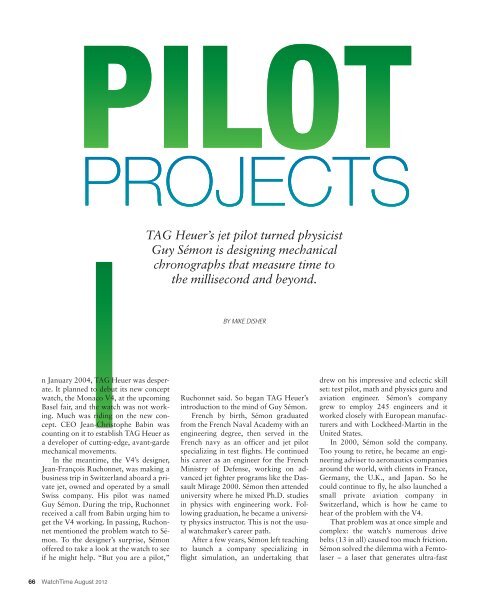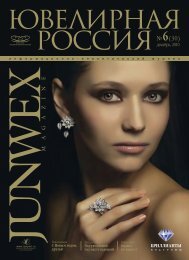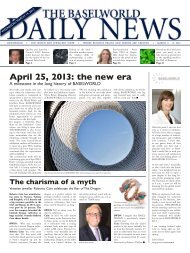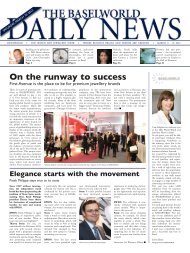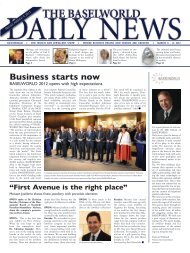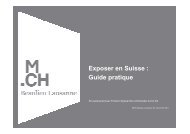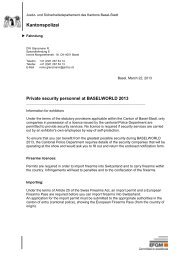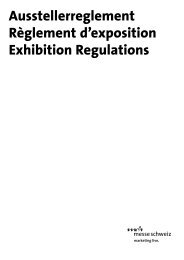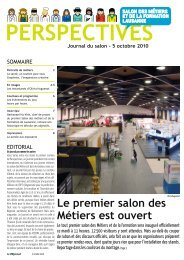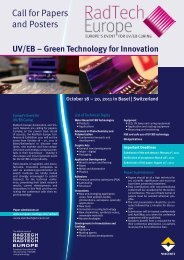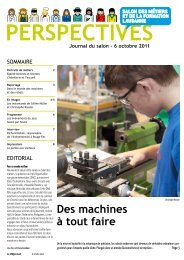WatchTime - August 2012
WatchTime - August 2012
WatchTime - August 2012
Create successful ePaper yourself
Turn your PDF publications into a flip-book with our unique Google optimized e-Paper software.
n January 2004, TAG Heuer was desperate.<br />
It planned to debut its new concept<br />
watch, the Monaco V4, at the upcoming<br />
Basel fair, and the watch was not working.<br />
Much was riding on the new concept.<br />
CEO Jean-Christophe Babin was<br />
counting on it to establish TAG Heuer as<br />
a developer of cutting-edge, avant-garde<br />
mechanical movements.<br />
In the meantime, the V4’s designer,<br />
Jean-François Ruchonnet, was making a<br />
business trip in Switzerland aboard a private<br />
jet, owned and operated by a small<br />
Swiss company. His pilot was named<br />
Guy Sémon. During the trip, Ruchonnet<br />
received a call from Babin urging him to<br />
get the V4 working. In passing, Ruchonnet<br />
mentioned the problem watch to Sémon.<br />
To the designer’s surprise, Sémon<br />
offered to take a look at the watch to see<br />
if he might help. “But you are a pilot,”<br />
66 <strong>WatchTime</strong> <strong>August</strong> <strong>2012</strong><br />
TAG Heuer’s jet pilot turned physicist<br />
Guy Sémon is designing mechanical<br />
chronographs that measure time to<br />
the millisecond and beyond.<br />
BY MIKE DISHER<br />
Ruchonnet said. So began TAG Heuer’s<br />
introduction to the mind of Guy Sémon.<br />
French by birth, Sémon graduated<br />
from the French Naval Academy with an<br />
engineering degree, then served in the<br />
French navy as an officer and jet pilot<br />
specializing in test flights. He continued<br />
his career as an engineer for the French<br />
Ministry of Defense, working on advanced<br />
jet fighter programs like the Dassault<br />
Mirage 2000. Sémon then attended<br />
university where he mixed Ph.D. studies<br />
in physics with engineering work. Following<br />
graduation, he became a university<br />
physics instructor. This is not the usual<br />
watchmaker’s career path.<br />
After a few years, Sémon left teaching<br />
to launch a company specializing in<br />
flight simulation, an undertaking that<br />
drew on his impressive and eclectic skill<br />
set: test pilot, math and physics guru and<br />
aviation engineer. Sémon’s company<br />
grew to employ 245 engineers and it<br />
worked closely with European manufacturers<br />
and with Lockheed-Martin in the<br />
United States.<br />
In 2000, Sémon sold the company.<br />
Too young to retire, he became an engineering<br />
adviser to aeronautics companies<br />
around the world, with clients in France,<br />
Germany, the U.K., and Japan. So he<br />
could continue to fly, he also launched a<br />
small private aviation company in<br />
Switzerland, which is how he came to<br />
hear of the problem with the V4.<br />
That problem was at once simple and<br />
complex: the watch’s numerous drive<br />
belts (13 in all) caused too much friction.<br />
Sémon solved the dilemma with a Femtolaser<br />
– a laser that generates ultra-fast


